ANIMAL WELFARE
Come with us to explore the wide, wide world of goats

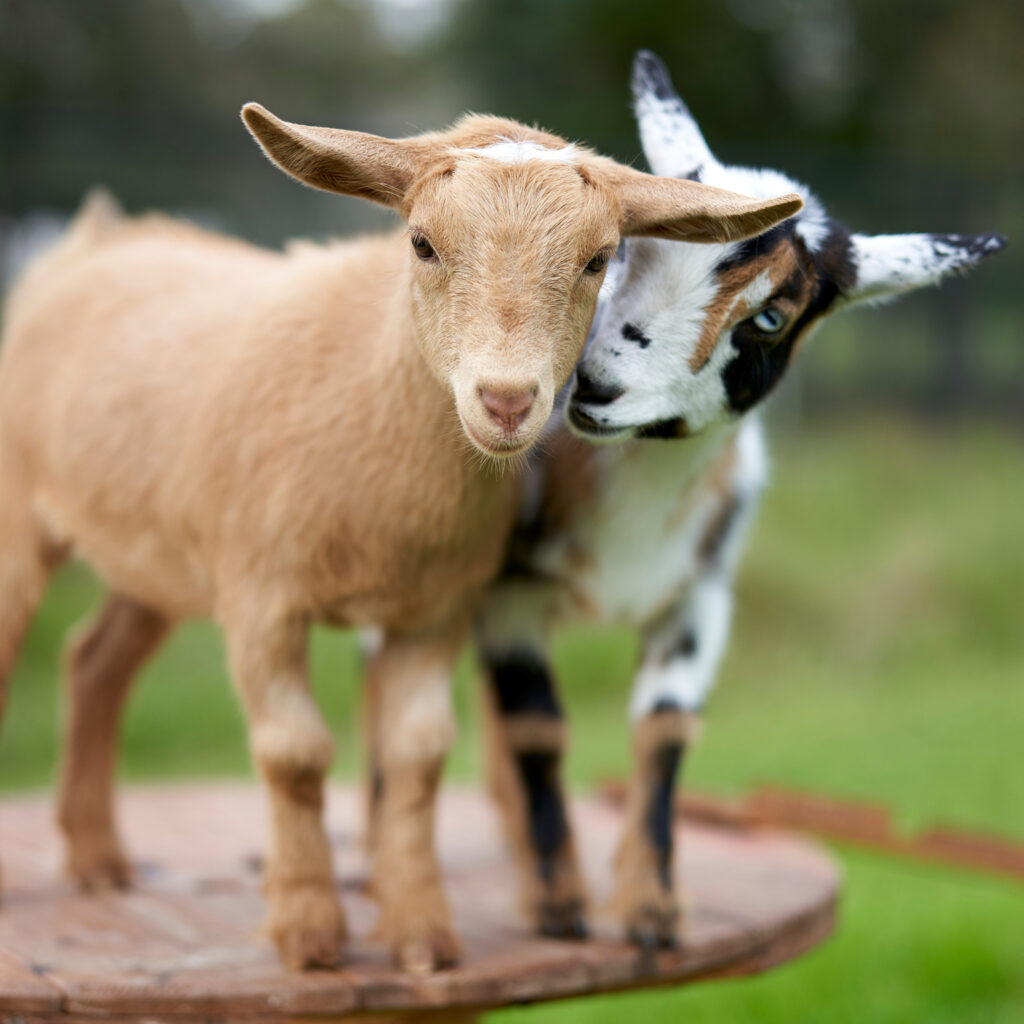
Not only are goats exceedingly charming animals with impressive, timeless hairstyles – they are also real masters of survival and agility. These four-legged friends with horns have more brains than many people would give them credit for at first glance. They have conquered the world. It seems as though no obstacle is too great for the goat. And, what’s more – they’re incredibly cute!
At the same time, we shouldn’t forget that, regretfully, the main reason that humans keep goats is for their milk and their meat. In many regions of the world, goat is the most commonly eaten meat after chicken and pork. And goat’s cheese is also eaten all around the globe. In Germany, especially, this really doesn’t have to be the case. Fans of cheese substitute products have known this for some time now.
In today’s goat special, let’s take a closer look at all you need to know about these cheeky bearded creatures!
Domestic goats: Clever court jesters
Domestic goats are real characters: full of curiosity, and often very funny. Their intelligence is coupled with a healthy dose of mischievousness, making them lovable, entertaining companions. Whether they’re busy opening doors, breaking out of their enclosures, or stealing the farmer’s shoes, domestic goats always have a prank or two in store for you! Their ability to adapt and learn quickly makes them fascinating – if sometimes challenging – pets. I’m sure we all recall at least one viral video of these plucky animals getting into mischief, or appearing to believe they’re another species entirely – barking like dogs, for example!
All goats are created equal – but different
With over 300 different species worldwide, you’d be forgiven for thinking that goats had been holding a diversity competition. If you’ll allow, some of these unique – and sometimes comical – representatives of the goat kingdom would like to introduce themselves.
- Mountain goats: the extreme sports lovers
Let’s start with the impressive mountain goats – who make climbing mountains look like a walk in the park. With their impressive horns, these acrobats are the daredevils of the goat world, and can easily be considered extreme sports lovers of the animal kingdom. Imagine climbing up a rock face so steep it’s almost a vertical drop – all without any kind of safety harness. These animals’ skills would leave even the most experienced mountaineers quaking in their boots. Their hooves are veritable natural wonders – perfectly suited to finding their footing on narrow rock ledges. When chamois goats climb mountains, you’d think they had asked the mountain for permission in advance! Such is their oneness with the challenging terrain.
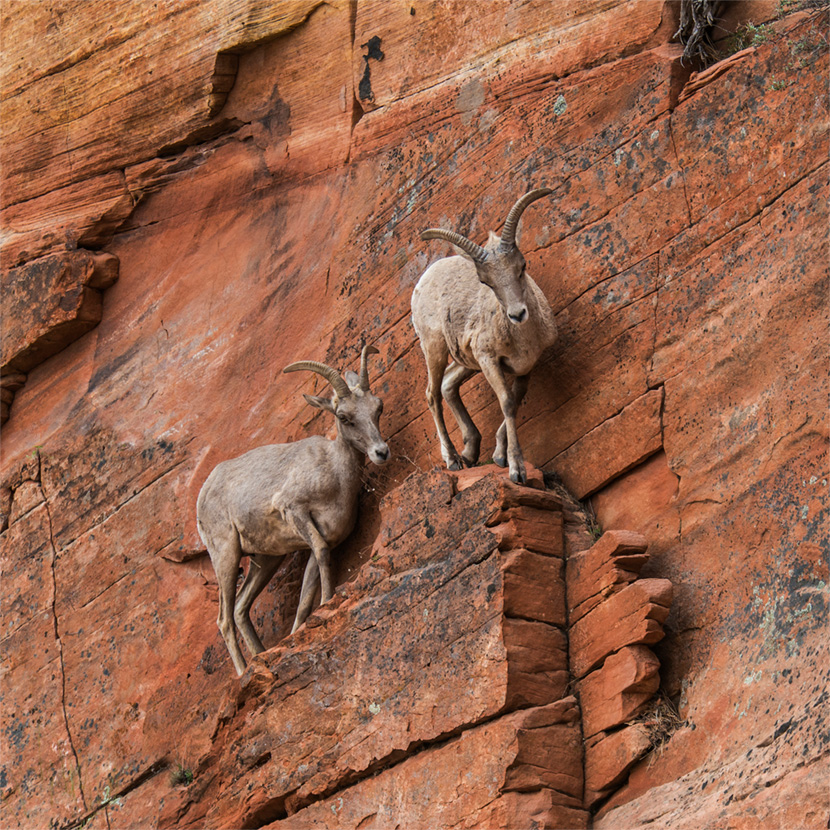
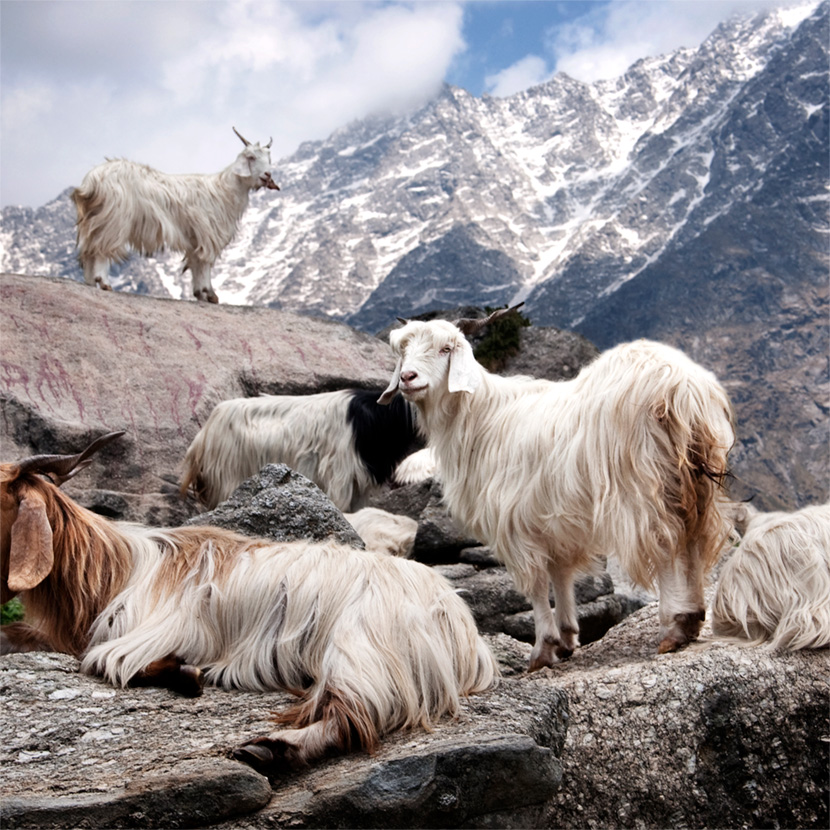
- Cashmere goats: the fashion icons
Next up are cashmere goats – the fashion divas of the goat kingdom. They are wool-producing goats, with a special undercoat in black, white, gray, or brown. With their luxurious coats, which are softer than even the softest of sheep’s wool, they are the undisputed stars of nature’s catwalk – or should that be goatwalk?! As always, we believe that goats are the only ones who look good in goat’s wool. In the regions where they live – or have lived, at least originally – such as the Himalayas, this wool keeps them wonderfully warm and dry.
- Dwarf goats: pint-sized prowess
Dwarf goats are the entertainers of their species. Small, cheeky and full of energy, they are almost like miniature comedians. They are the perfect candidates for the title of pint-sized “goat of the year”. We humans are fascinated by their playfulness, meaning they are becoming more and more popular as pets. However, they are not toys, of course, but living beings with very particular needs and characteristics. That’s why you should always make sure you’re well-informed on how to keep them before getting one, so you really can offer the animal a species-appropriate home.
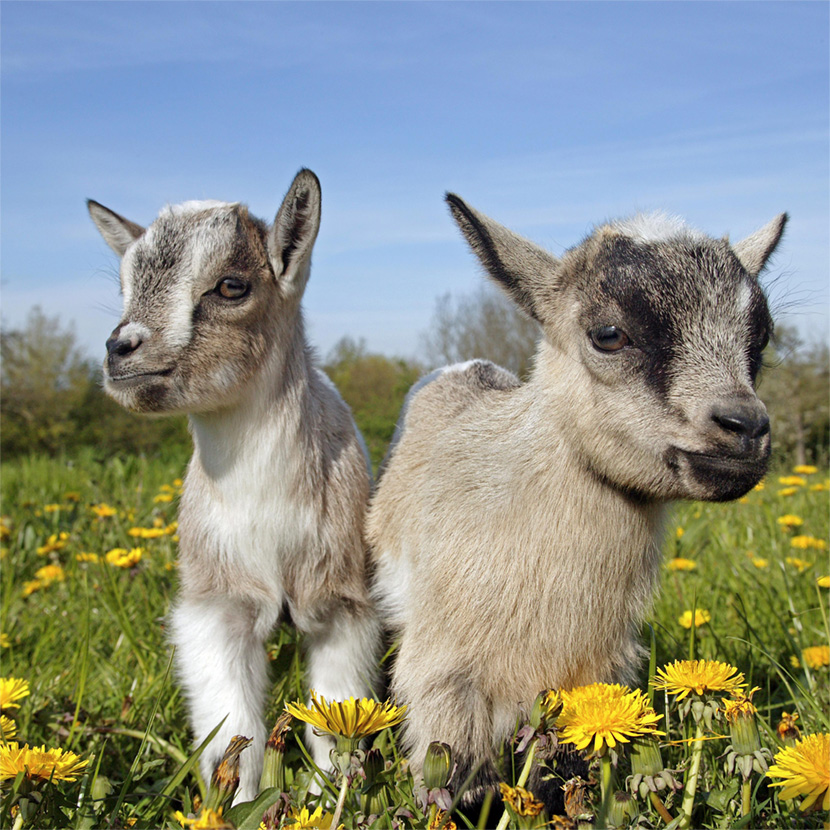
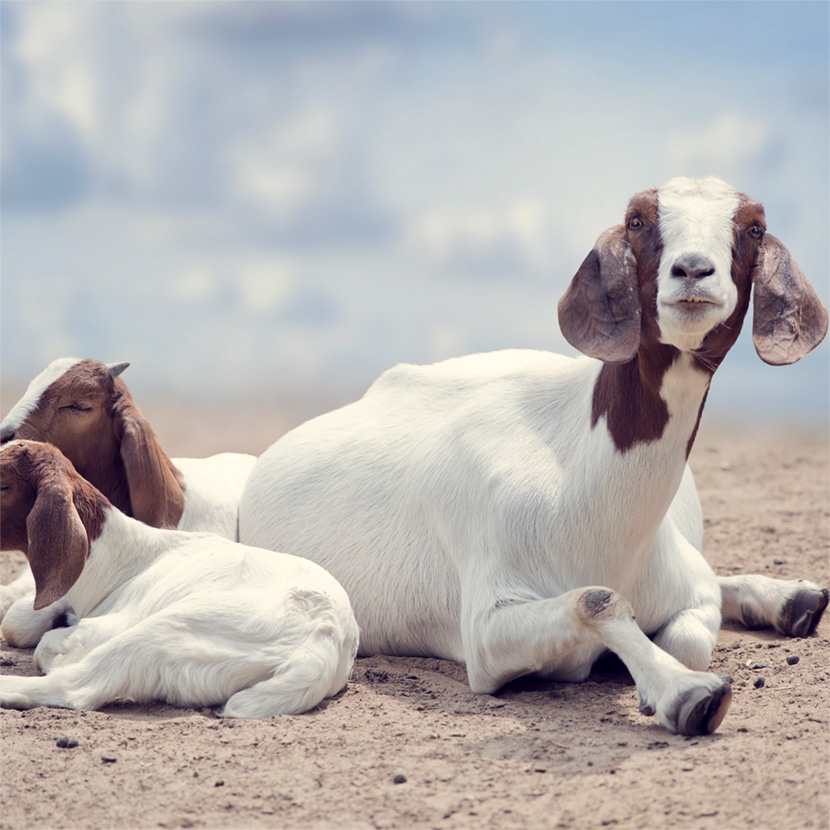
- Boer goats: the bodybuilders
Boer goats (also known as Boerbok) are the muscle men among goats. This white goat species with a reddish-brown head originates from South Africa, where it was originally bred for meat production. With their solid stature and impressive muscle power, it’s safe to say they are the Arnold Schwarzeneggers of the goat world. Not only do they look great in the meadows – they would also do well at the gym!
- Angora goats: the hairstylists
We mustn’t forget the Angora goats: the hairstylists of wool-producing goats. With their long, curly, silky coats, which make them look like they’ve just been to the hairdresser’s, they are real trend setters in the world of goat hairdos. What’s more, they are pure white animals, which gives them a real air of nobility.
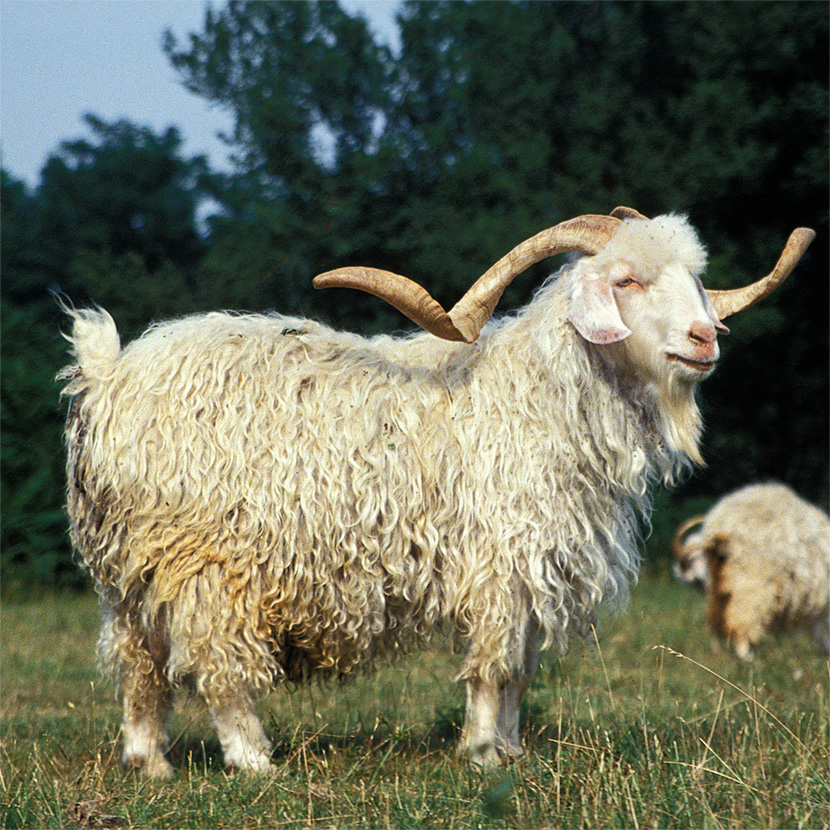
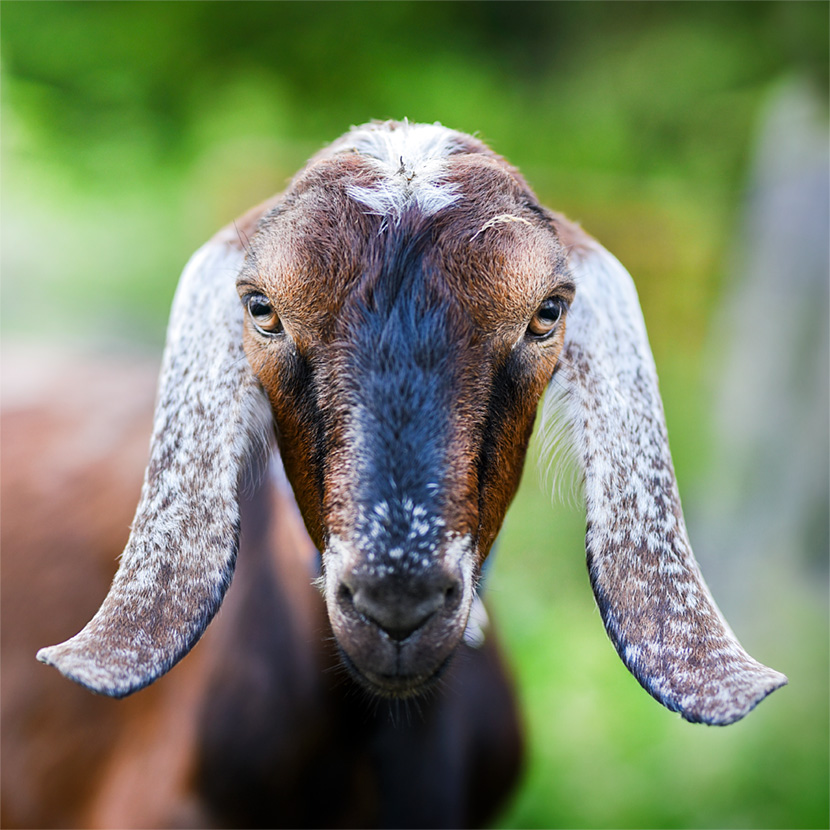
- (Anglo-)Nubian goats: the goats with the long ears
With their long, floppy ears and aristocratic appearance, long-legged Nubian goats look like elegant landed gentry who’ve just walked straight out of a Jane Austen novel. They originated from a cross between African or Indian goat breeds with English goats, and are known for being particularly intelligent.
- Pyrenean goats: mountain ghosts
And then there are the majestic Pyrenean goats, native to the mountainous region between France and Spain, which roam through misty mountain landscapes like ghosts. With their thick coats and impressive horns, they look like the guardians of ancient myths and legends.
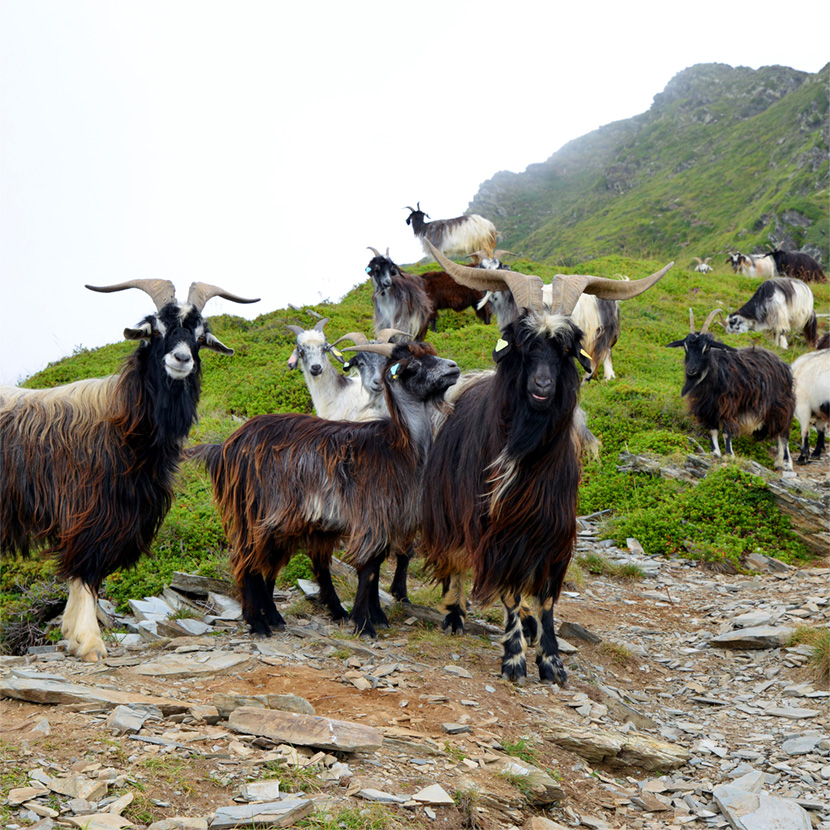
Social butterflies and expert climbers
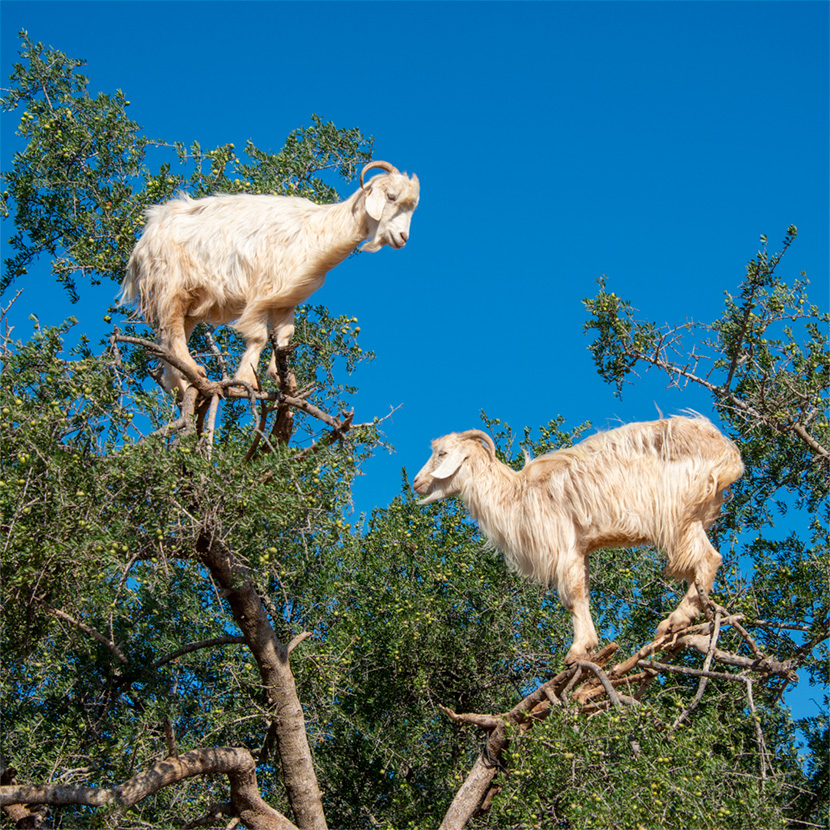
And that isn’t all there is to know about these animals. Did you know, for example, that goats are extremely sociable animals? They create close bonds, and stay in contact by bleating, like guests at a party. Their communication really is fine-tuned. What sounds like bleating to us is actually their very own, multi-layered goat language. They are extremely caring, especially when it comes to looking out for young animals. In goat society, everyone knows everyone else, and everyone looks out for one another – together. Especially when there are harsh conditions to endure, this social structure really pays off. Goats climb trees – and sometimes even share occupancy of them.
Goats are at least as skillful as they are sociable. Not just on steep mountain slopes do they feel as snug as a bug – or rather, a goat – in a rug. They also feel perfectly at home amid tree branches and shrubs.
The idea of tree-climbing goats sounds like something out of a fairytale, but it is in fact reality. In Morocco, for example, goats climb argan trees to get to their delicious fruits. These breathtaking feats of acrobatics are not just testament to their adept moves – they also prove that goats are literally prepared to climb trees to get a good meal. This has helped them to adapt to many barren landscapes, and they are true masters of survival in areas which are partially inhospitable. Of course, the fact that people let the goats work for them to obtain argan oil is another story…
From early goats to “around the world on four hooves”
Today’s domestic goats are probably descended from a species of early goat characterized by robustness and versatility. Imagine a Chuck Norris of the animal world – tough, adaptable, and ready to take on any challenge that presents itself. This early goat was the starting point for the diversity we see among goats nowadays. Talking about the geographical origins of goats will take us on a fascinating trip around the world…
This is because the history of goats goes back as far as the history of civilization itself, and takes us on a journey through different continents and cultures. Our journey starts in the Middle East, which is thought to be where goats are originally from. Archaeological findings indicate that goats were already being domesticated in this region around 10,000 years ago. These early goats were probably wild, robust, and perfectly adapted to the dry, mountainous terrain. The people of the time made use of their milk, meat and coats. Then, from the Middle East, goats spread to Europe along with migrating human tribes.
Within the various European cultures, numerous different goat breeds developed, which were adapted to the different climatic conditions and landscapes. Whether it was in the windy heights of the Scottish highlands or the sun-drenched Mediterranean – goats found new homes everywhere. Europeans then brought goats to the Americas and, somewhat later, even to Australia and New Zealand.
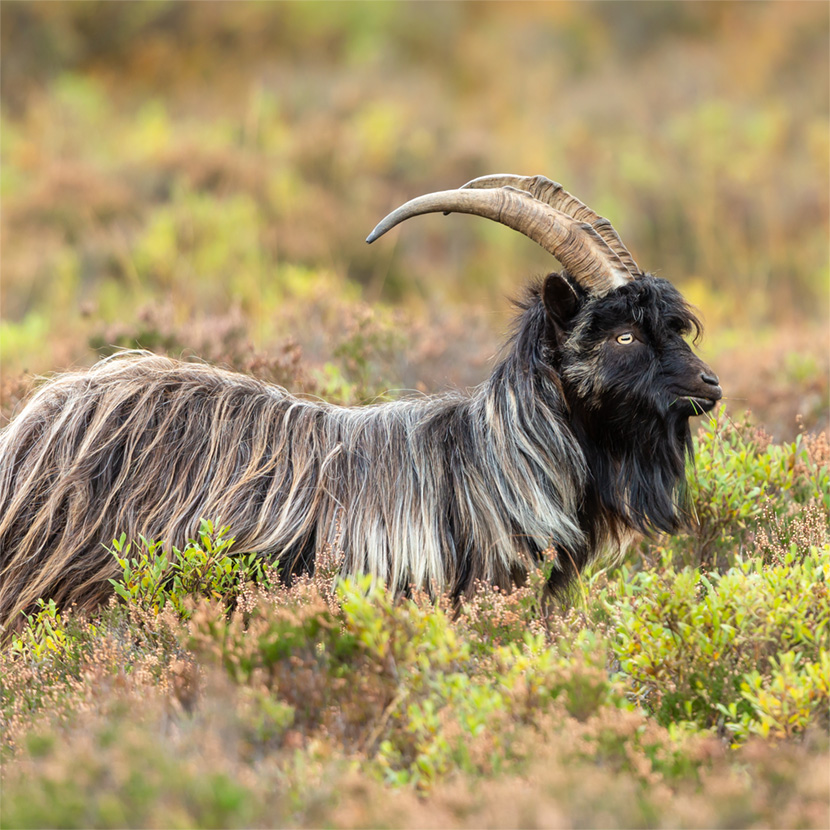
Masters of adaptation
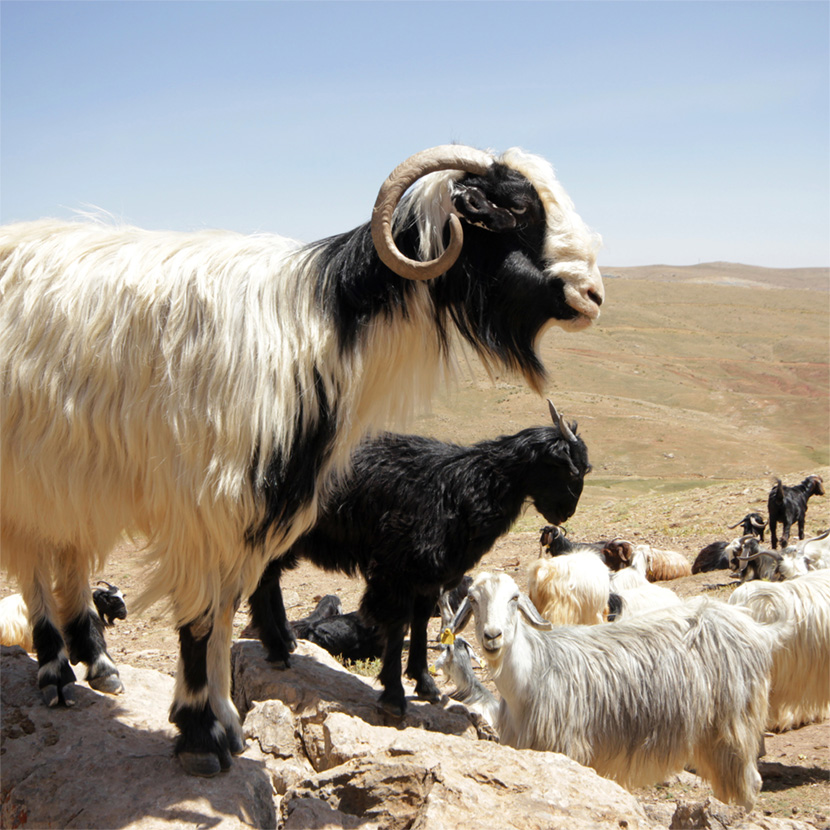
The extent of goats’ adaptability becomes most apparent in the extreme opposites represented by Africa’s different climatic regions. It was here that they developed to suit the most varied of environments – from the dry deserts of North Africa to the humid regions south of the Sahara. African goat breeds are known for their ability to resist disease and cope with extreme weather conditions.
In Asia, particularly in countries such as India, China and Mongolia, goats are indispensable for rural life. By the way, most of the world’s goats live in Mongolia. In the high mountain ranges of the Himalayas, you’ll even find goat breeds which have adapted to the harsh climate and the steep mountain slopes up at lofty heights.
This makes goats truly global creatures. From icy mountains to deserts and tropical rainforests – wherever you go, you’re sure to find goats. Their versatility and survival power have made them a symbol of flexibility, toughness and stamina. In all four corners of the world, goats are busy showing that they are more than just livestock to serve humans – they are an integral part of our histories and cultures.
Just as cute and intelligent as our favorite pets
Emotionally and socially, goats are no different to animals we keep as pets, such as cats and dogs. Experiments (by the research team of Alan McElligott from Queen Mary University in London) have shown that goats “understand” people just as well as do dogs or horses – even though they don’t usually live in such close quarters or interact with us as much. So, goats are anything but stupid! During their domestication by humans, goats’ cognitive abilities have continued to develop. This means that goats’ intelligence is comparable to that of dogs or horses. “Earlier studies had already shown us that goats are more intelligent than we thought,” McElligott explains. However, the conclusions of his study would indicate that goats’ cognitive abilities have, until now, been underestimated (Klaus Taschwer, Austrian economics editor at Austrian newspaper Der Standard, 2016). Goats have shown themselves to be capable of joy, grief and curiosity. They play, snuggle, and build relationships. These emotional capabilities beg the question of why we (for the moment) often treat goats differently to our furry friends at home. The more we know about them, the fewer legs we have to stand on – that’s what we think, at least. And, after all, great alternatives to goat’s cheese do exist.
Fun facts – not to be bleated at
Here are ten astounding facts about goats:
- Goats can modulate what sounds they make depending on which other goats they’re communicating with, and on the situation – a bit like switching from WhatsApp to Instagram! 😉
- Goats’ eyes have rectangular pupils, giving them a broad field of vision – which comes in handy when they’re planning their next prank, or just want to keep an eye on things 😉
- Goats are able to recognize and interpret emotions in the faces of other goats – and in human faces. This pretty much makes them the body language experts of the animal kingdom.
- Some goat species can jump up to three meters high – that’s like a human being able to jump over a lorry!
- Goats have outstanding memories, and can remember people and other animals.
- What’s more, once goats have learned a skill, they never forget it. As part of a study, goats learned to open a closed box by using levers. Four years later, they still had this skill.
- They can solve complex puzzles to get to food. You could say they have a Sherlock Holmes-like intuition.
- They can laugh – yes, you read that correctly: goats can let out a kind of gurgle that sounds like laughter.
- Baby goats start walking within minutes of being born. You might say they’re born ready to rock!
- They can befriend other species of animal – and not just cats or dogs.
On that note: it’s safe to say that you should never underestimate the talents of a goat. Not only are these animals entertaining and intelligent – they are also wonderful creatures which deserve to be respected and treated properly.
With their curiosity, agility and likable nature, they were our companions as we humans conquered the world. And who knows, maybe goats are called goats because they’re the Greatest Of All Time!!















